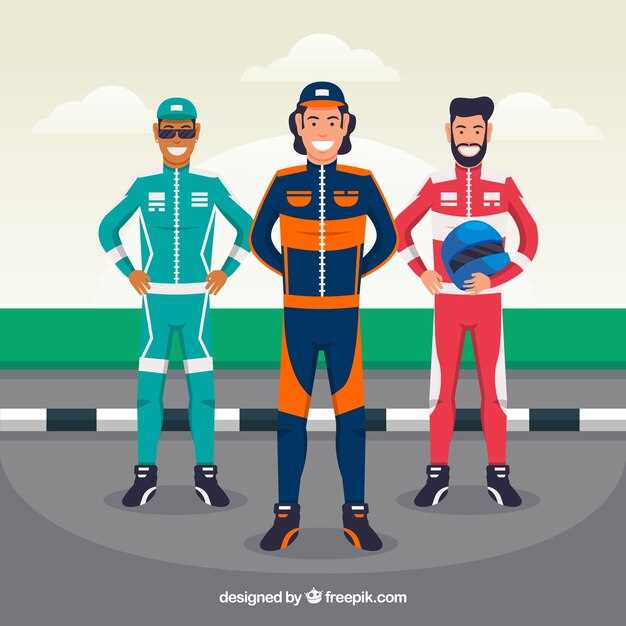
When stepping into the thrilling world of racing, safety remains the foremost priority for any beginner. Understanding the essential requirements for helmets and racing suits is crucial not only for compliance with regulations but also for ensuring personal safety on the track. This article aims to clarify these vital safety standards and assist novice racers in making informed choices.
A high-quality helmet is an indispensable piece of racing equipment. It serves to protect the head from impacts and is engineered to withstand the specific challenges of high-speed motorsport. Various organizations enforce strict guidelines regarding helmet specifications, including standards such as Snell or FIA certification, which ensure that the helmet meets rigorous safety requirements. Beginners must familiarize themselves with these certifications to select a helmet that will offer the best protection.
Similarly, racing suits play a pivotal role in safeguarding the driver’s body from extreme conditions. Constructed from fire-resistant materials, these suits are designed to minimize burn injuries in case of an accident. The racing suit is often required to meet specific standards, such as FIA 8856-2000, providing vital protection for drivers. As with helmets, understanding the level of protection required and the appropriate specifications is essential for newcomers eager to compete safely and confidently on the racetrack.
Choosing the Right Helmet for Beginners: Safety Standards and Features

Selecting the appropriate helmet is crucial for beginners in any racing sport. The primary purpose of a helmet is to provide safety and protection, making it essential to understand safety standards and important features. One of the first aspects to consider is the certification of the helmet. Look for helmets that meet or exceed recognized safety standards such as DOT (Department of Transportation), Snell, or ECE (Economic Commission for Europe). These certifications ensure that the helmet has undergone rigorous testing to protect against impacts.
Another key feature to examine is the helmet’s construction material. Typically, helmets are made from lightweight materials like polycarbonate or fiberglass, which offer excellent impact resistance. A well-constructed helmet should combine durability with comfort, allowing for extended wear during racing. Furthermore, check for the helmet’s padding and liner. High-quality padding can enhance comfort and fit, helping to reduce fatigue over time and providing a better overall driving experience.
Ventilation is another important feature for beginners to consider. Proper airflow helps maintain a comfortable temperature inside the helmet, preventing overheating during races. Look for models with multiple vents or channels that facilitate air circulation. Additionally, a removable and washable inner lining can improve hygiene and comfort, especially for those who race frequently.
Finally, ensure that the helmet fits properly. An ill-fitting helmet can compromise safety and comfort. It should feel snug but not overly tight, with no significant gaps between the helmet and your head. Many helmets come with adjustable straps or padding to customize the fit. Before making a purchase, trying on different sizes and styles can help you find the best option that suits your needs.
Understanding Racing Suit Materials and Fit for Optimal Performance

When it comes to racing, the right suit can significantly impact performance and safety. Racing suits are designed to offer protection while maximizing comfort and mobility. The materials used in these suits play a crucial role in determining their effectiveness.
Most racing suits are crafted from fire-resistant materials such as Nomex, which provide protection against heat and flames. This is essential, especially in motorsport disciplines where the risk of fire is present. Additionally, suits may incorporate aramid fibers that enhance durability and resistance to abrasion, further ensuring the wearer’s safety on the track.
The fit of a racing suit is equally important. A proper fit allows for optimal movement, enabling drivers to maneuver effectively while driving. Suits that are too loose can cause excess material to bunch up, leading to discomfort and distraction. Conversely, an overly tight suit can restrict movement and circulation, hindering performance. Therefore, finding a balance between snugness and flexibility is essential.
Another aspect to consider is the breathability of the material. Racing can be physically demanding, leading to increased body temperature and perspiration. Many suits are designed with ventilation features or moisture-wicking fabrics that help regulate body temperature, keeping the driver cool and focused during intense races.
In addition to material and fit, layering can enhance performance as well. Some drivers opt for additional undergarments made from moisture-wicking materials to improve comfort further. This layering technique helps manage heat and moisture, allowing for better concentration on racing techniques and strategies.
Ultimately, selecting the right racing suit involves understanding the materials, ensuring a proper fit, and considering additional features that enhance performance. Coupled with a well-fitted helmet, a racing suit creates a comprehensive safety and performance package essential for any racer, from beginners to professionals.
Essential Accessories to Complement Your Racing Gear Setup
When preparing for a successful racing experience, selecting the right helmet and racing suit is crucial, but the importance of complementary accessories cannot be overlooked. These accessories enhance safety, comfort, and performance while on the track.
First and foremost, a quality racing balaclava is essential. It not only provides an extra layer of protection between your skin and the helmet, but also helps wick away sweat, keeping you cool during intense races. This accessory also protects the helmet’s interior from wear, prolonging its lifespan.
No racing setup is complete without a suitable pair of gloves. Racing gloves offer improved grip on the steering wheel, ensuring better control of your vehicle. They are designed with fire-resistant materials, providing an additional layer of safety in the event of an accident. Opt for gloves that fit snugly yet comfortably, allowing for full dexterity.
A good pair of racing shoes is another critical accessory. Specialized racing shoes are designed to offer exceptional grip and support, enabling optimal pedal control. Look for shoes with anti-slip soles and a lightweight design to enhance your feel and responsiveness while driving.
Consider investing in a custom seat insert as well. This accessory not only maximizes comfort but also helps maintain proper posture during long races. A snug fit will minimize distractions and fatigue, allowing you to focus on performance.
Finally, don’t forget about communication devices. A reliable intercom system enhances communication with your team, facilitating real-time feedback and strategy adjustments while racing. This addition can significantly boost your performance by keeping you informed and connected throughout the race.
By equipping yourself with these essential accessories alongside your helmet and racing suit, you will create a well-rounded racing gear setup that prioritizes safety and performance. Each accessory plays a pivotal role in helping you perform at your best on the track.



